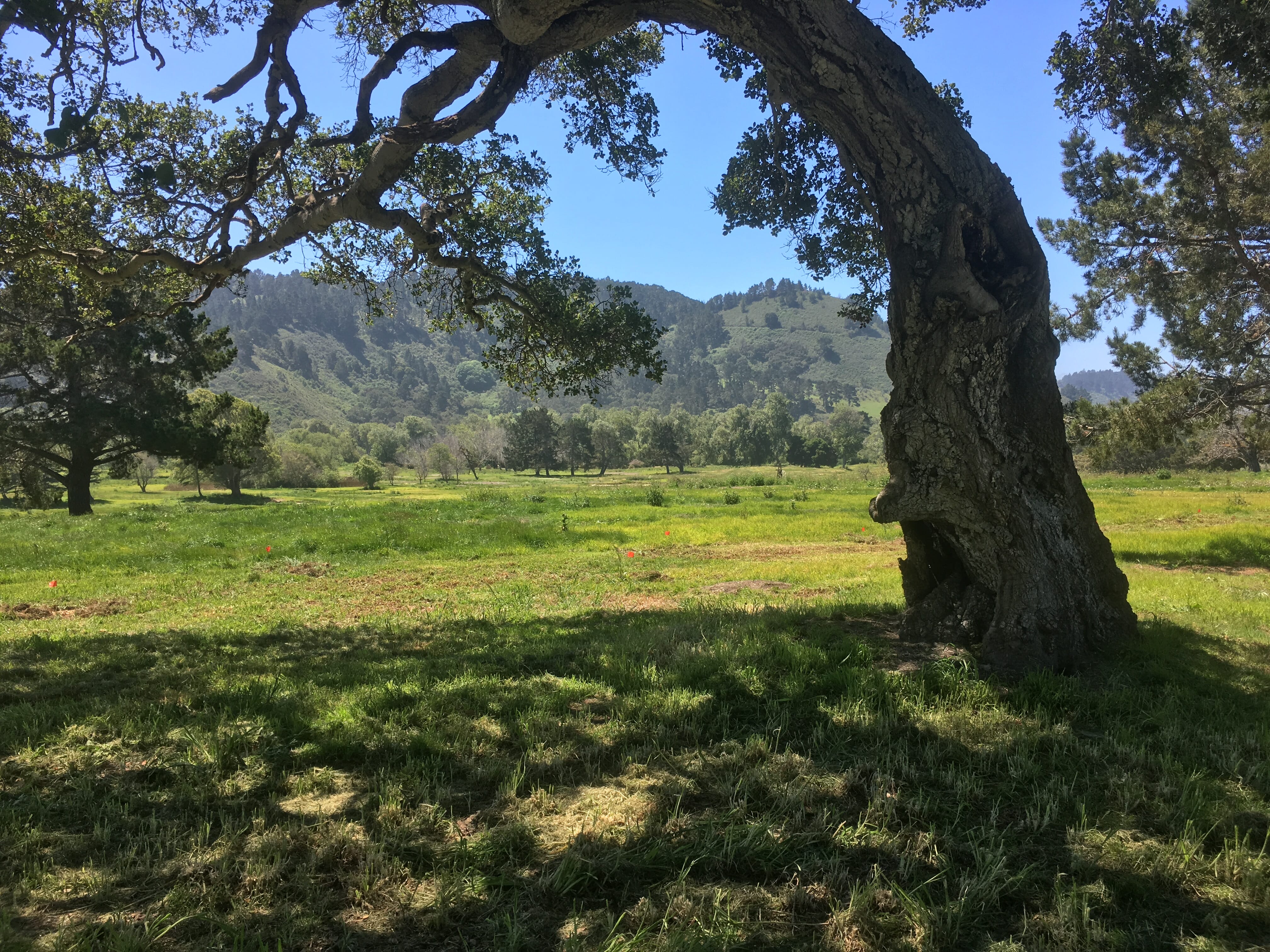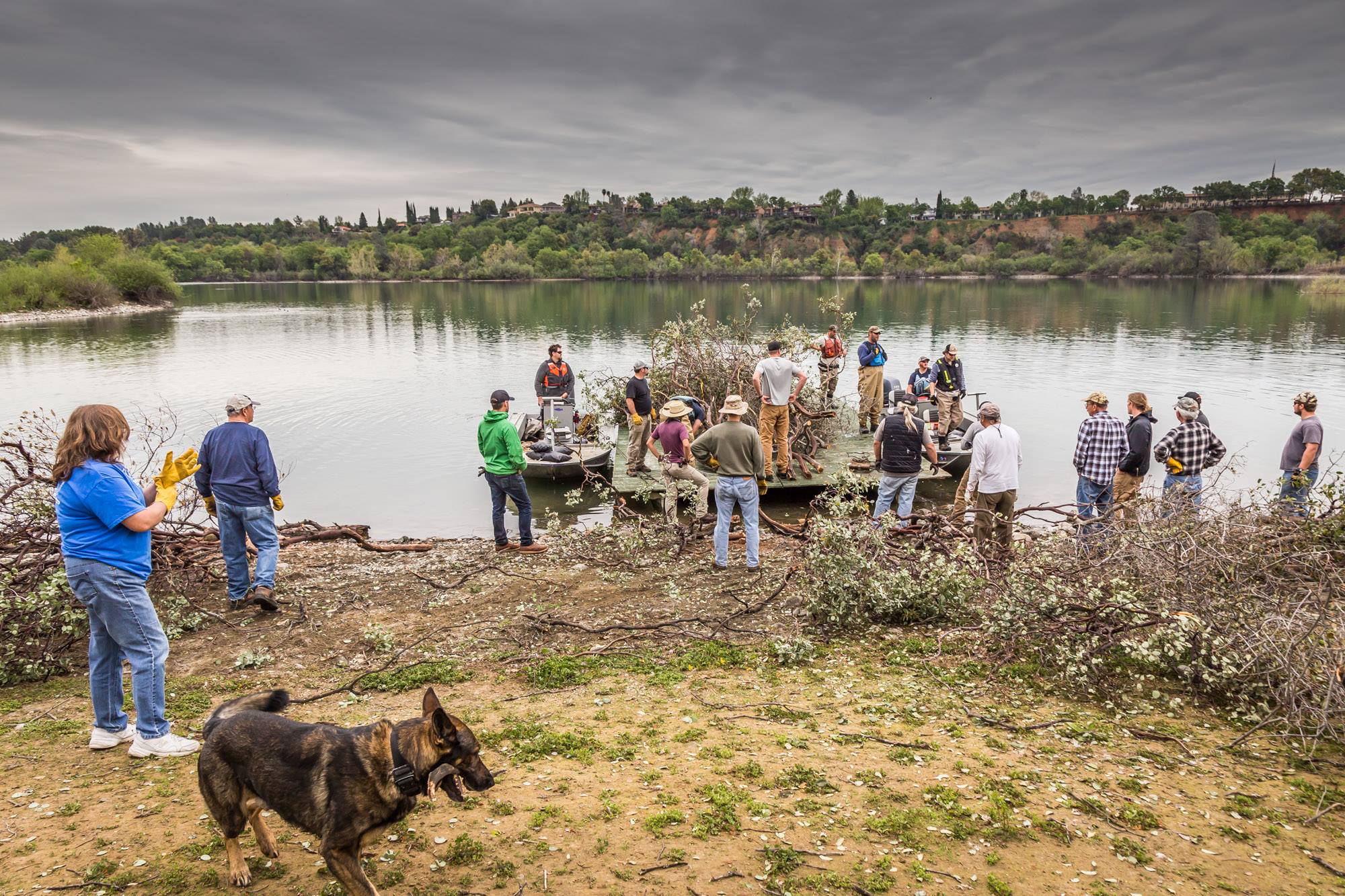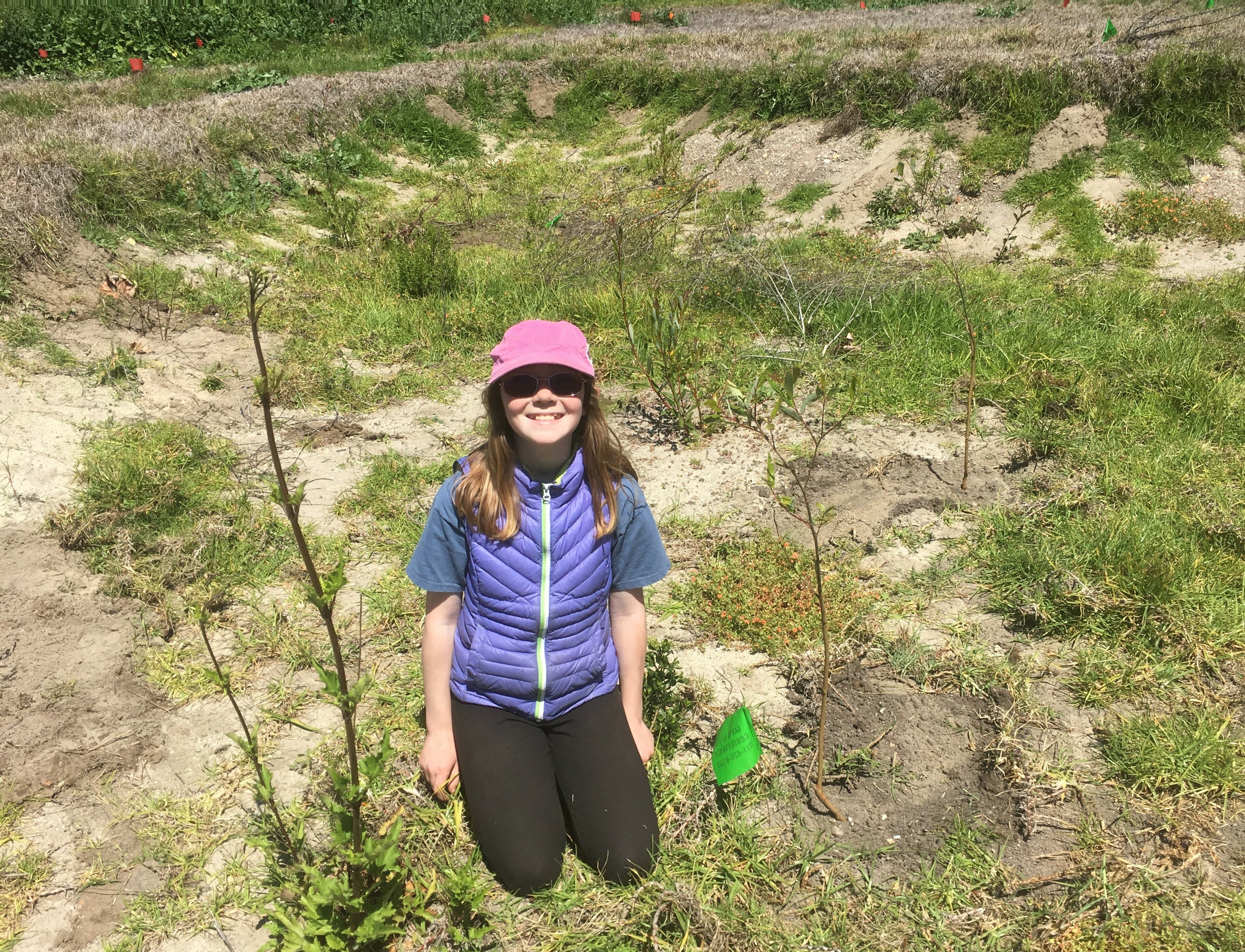Steinbeck Country TU Chapter family member Cassie Frahm with a willow she planted in an old sand trap on the former Rancho Canada golf course on Earth Day 2018.
By Sam Davidson
You may have heard that there are a lot of dead trees in California these days. Over the Earth Day weekend, TU’s Steinbeck Country Chapter replaced a few.
820 of them, to be exact. In one day.
As of last December, there were an estimated 129 million deceased trees in the Golden State, carpeting the slopes of the Sierra Nevada in brown and rust and dropping limbs on cars parked on suburban streets.
Millions more are on the verge of oblivion, including the stately sycamores, leaves as big as serving platters, that for millennia have provided shade and anchored streambanks for native trout and steelhead in Central and Southern California streams, each an oasis in an increasingly arid landscape.
Drought and insects are the primary culprits for this landscape-scale die-off. The rapidly warming climate isn’t helping.

The former Rancho Canada golf course along the Carmel River already looks different, two years after its purchase by the Trust for Public Land, TU, and the Santa Lucia Conservancy. Note flags for new tree plantings.
All this arboreal death and destruction has consequences for coldwater fishes. Fewer streamside trees means less shade, less shelter and warmer water. Upslope, expansive areas of dead trees mean increased risk of severe wildfire, and, especially after fires, erosion of big volumes of sediment into creeks and rivers.
Apache and Gila trout, some of this country’s rarest natives, are poster children for the problems for trout streams caused by tree desiccation and subsequent wildfire.
What can be done to help trout streams stay healthy as the current tree die-off phenomenon works its way through the ecology of watersheds? Steinbeck Country TU’s work on the Carmel River, a wild steelhead recovery river and focal watershed for the chapter, offers some answers.
Two years ago, Steinbeck Country TU joined the Trust for Public Land and the Santa Lucia Conservancy to pull off a stunning land deal: acquisition of two 18-hole golf courses on the lower Carmel River and conversation of three properties to regional park land. Almost all the water (some 300 acre-feet per year) formerly used to irrigate the golf courses will now be left in the river.
A few days ago, the former Rancho Canada properties officially became part of the Monterey County Regional Parks District. Now, the chapter is stepping up to help “re-wild” the courses—which last weekend meant planting a variety of native trees, including live oak, buckeye, willow and sycamores.
15 volunteers, led by Steinbeck Country president Christy Fischer (also executive director of the Santa Lucia Conservancy), planted 820 seedling trees. In about four hours.
Granted, they used some small power tools and the soil wasn’t drought-baked to concrete. But still—820 trees in four hours.
And the chapter isn’t done. Steinbeck Country TU will continue to plant native trees at Rancho Canada, with increasing emphasis on the floodplain and replacing large cottonwoods and sycamores growing along the river banks that have died. They will also work to improve access for anglers to a stretch of river that was formerly very difficult to fish.
Steinbeck Country TU is by no means alone in their impressive volunteerism. Last year, TU volunteers across the country donated more than 730,000 hours of their time to coldwater conservation.

Shasta Trinity Cascade volunteers hard at work during their recent habitat improvement project on the Sacramento River, using dead trees to improve structure for juvenile salmon and trout.
In California recently, for example, the Shasta Trinity Cascades Chapter found a use for dead trees. The chapter partnered with the California Department of Fish & Wildlife, the US Bureau of Reclamation, The Fly Shop, the City of Redding and other agencies and fishing groups and to complete a major conservation project on the Sacramento River near Redding.
The Kutras Lake project was designed to build and introduce new habitat to the river corridor to benefit juvenile salmon and trout, especially the dwindling population of endangered Winter Run Chinook Salmon. Over two days, 22 volunteers placed and anchored 17 piles of woody debris in areas where juvenile trout and salmon can best utilize them. The chapter exceeded their goal in number of structures placed by nearly 25 percent.
Shasta Trinirty Cascades TU didn’t rest on their laurels. They spent Earth Day doing their massive annual cleanup of the Sacramento River between Redding and Keswick Dam.
Meanwhile, also over the Earth Day weekend, the Sac-Sierra Chapter of TU, based in Sacramento, participated in the first of a series of tree-planting outings this year along the South Fork of the Kings River. Sac-Sierra TU president Bill Templin has had a life-long love affair with the SF Kings and has developed a strong partnership with the National Park Service and U.S. Forest Service to help steward this river’s phenomenal wild trout fishery.
Other TU chapters have famously promoted the re-purposing of Christmas trees as instream structure.
In the short term, there may be little we can do about reversing the current tree mortality phenomenon in the West. But as TU chapters in California and elsewhere have shown, we can help offset the harmful impacts of this phenomenon by planting new trees in places that help trout and using dead trees to restore and improve stream habitat structure.
And thanks to the character and abilities of TU volunteers, we can expect to do this kind of work at the superhuman rate of 820 trees in one day.
Sam Davidson is TU’s communications director for California and Oregon. He is a big fan of trees, except when they challenge his limited casting abilities.



